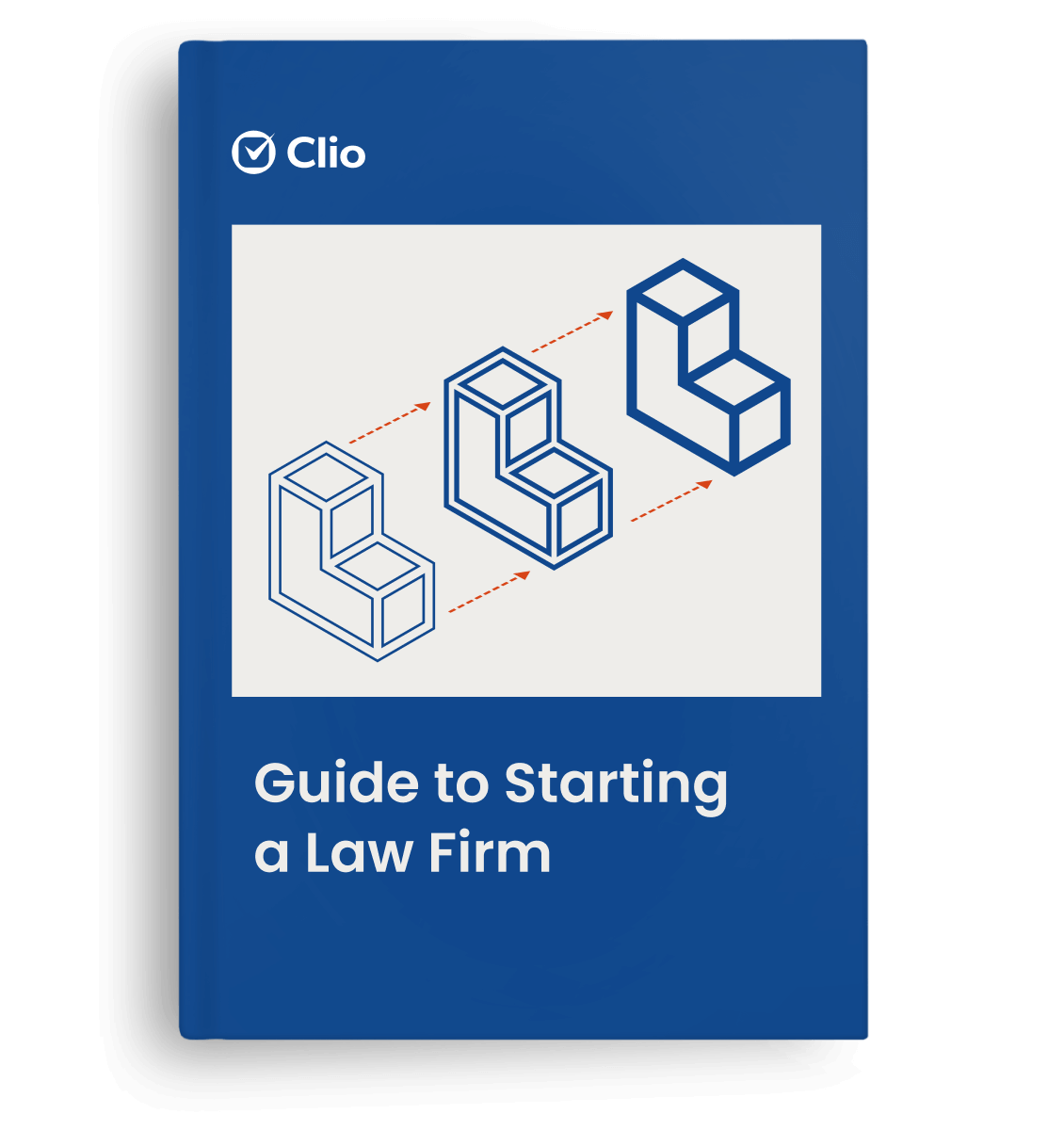Many lawyers and aspiring practitioners are struck by the allure of “Big Law.” Generally comprising of the largest firms in the US, Big Law can provide attorneys with an opportunity for high compensation and prestige.
But what exactly do we mean by the term Big Law? Which law firms earn this distinction?
Here, we delve into the meaning of the term “Big Law” and the criteria for inclusion in this category. After a review of some of the top Big Law firms, we explore the pros and cons of a career in Big Law.
From organizing client intake to creating and signing documents effortlessly, we streamline the process so you can focus on what you do best. Book a Clio Grow demo today.
What is Big Law?
Big Law refers to the largest and most prestigious law firms in the US, characterized by multiple offices in major cities and often internationally. It's defined by factors such as attorney count, revenue, and prestige, with certain firms regularly featured in Big Law listings.
The definition of Big Law is a bit amorphous and varies depending on whom you ask. The term can refer to the total number of attorneys, total revenue, prestige, or some combination of these and other factors. Regardless of the exact criteria considered, some big names consistently appear in Big Law listings.
Below, we review the big names in Big Law.
Curious who is deemed as one of the best law firms in America? Check out this post.
The top Big Law firms in the United States
The following are some of the top Big Law firms in the US, reflecting a range of practice areas and geographical bases.
| Firm Name | Annual Revenue | Number of Lawyers | About |
| Kirkland Ellis | $6.04 billion | 3,500 | Commercial litigation and other corporate interests are primary areas of focus for this Chicago-based firm, founded in 1909, with eleven major offices in the US. |
| Latham Watkins | $5.49 billion | 3,500 | This New York-based firm boasts offices in Europe, the Middle East, and Asia, a high-paying clientele, and a range of practice areas. |
| Norton Rose Fulbright | $2.1 billion | 3,300 | Formed by a 2013 merger between the UK-based Norton Rose and US-based Fulbright Jaworski, this international firm primarily represents major corporations, financial institutions, and innovative startups. |
| Baker McKenzie | $3.13 billion | 6,500 | Headquartered in Chicago, this general practice firm has 74 offices in 45 locations. |
| White & Case | $2.87 billion | 2,100 | New York-based with 46 offices in 31 countries, this international firm is a general practice specializing in “white-collar” law, such as antitrust and intellectual property. |
| Hogan Lovells | $2.61 billion | 2,800 | The product of a 2020 merger between US-based Hogan Hartson and UK-based Lovells, this general practice firm has twin headquarters in New York City and London. |
| DLA Piper | $3.47 billion | 3,700 | This firm covers a wide range of practice areas and maintains offices in 40 countries. |
| Jones Day | $2.45 billion | 2,500 | Founded in 1893, this firm represents over half of the Fortune 500 companies in a range of practice areas while focusing on corporate management, regulation, finance, and other facets of corporate law. |
The benefits of working at a Big Law firm
Now that we have a working definition of the term, let’s examine the actual benefits of working in Big Law.
Name recognition
Many attorneys and attorneys-to-be are drawn to Big Law by the prestige and name recognition since many of these firms are household names. This prestige partly derives from the exclusivity of the firms, since they focus on recruiting new attorneys from among the best academic performers at the top law schools.
If you aspire to have a career in Big Law, think about:
- Attending the highest-ranked law school you can
- Performing well academically
- Specializing in the practice areas that Big Law firms focus on.
Before you decide to sign up for a law school, ask yourself these questions.
Higher salaries
Another obvious draw of Big Law is the higher salaries commanded by associate attorneys, which can start over $200,000 annually.
If you rise to the level of partner at a Big Law firm, your income potential is even greater, which means you should understand the partnership structure of the firm where you work.
Interested in learning more about the newest trends in the legal industry? Check out our latest Legal Trends Report, filled with information on law firm marketing, the future of AI, and legal rates.
High-profile cases
Big Law firms often represent high-profile clients and work on exciting cases that garner headlines. Depending on your goals, this type of high-stakes work may align with what you seek from a legal career.
Networking opportunities and mentorship
Working in Big Law also allows you to rub shoulders with some of the top attorneys in the country, who often possess highly specialized expertise and a great deal of influence. This situation presents opportunities for networking and mentorship that are not easily replicated at smaller firms.
Want more Clio News?
Subscribe and get our content delivered to your inbox!
You may like these posts
Big Law salary scale
While we’re on the topic of salaries in Big Law, let’s discuss the Big Law salary scale.
In Big Law, lawyers are typically compensated according to the Cravath scale, a compensation model adopted by top-tier law firms to ensure transparency around lawyer salary. This payment system follows a lockstep structure based on the number of years since law school.
The name “Cravath scale” is derived from the Cravath system and the influence of Cravath, Swaine & Moore LLP, which is often seen as the standard for associate salaries, despite other firms like Milbank and Simpson Thacher leading the way in recent years with first-year associate salaries.
It’s a lockstep approach that associates, law students, and their in-house counterparts can closely monitor any shifts in the Biglaw salary scale. Historically, when one firm offers a higher salary, others tend to follow suit with salary increases shortly after.
What sets this scale apart is its uniform pay and consistent annual bonuses for all lawyers involved.
The downsides of working at a Big Law firm
It is important to look at the full picture and consider the downsides of working in Big Law. Even if you have excellent grades from a top law school, Big Law may not necessarily be for you.
Among the drawbacks of Big Law are high billable hour quotas and competitive work environments. Big Law is notorious for its “always on” culture, where attorneys are expected to work long hours, nights, and weekends on a regular basis.
Even the allure of partnership is not a sure thing — it could take many years to make it to partnership level, with numerous pitfalls along the way.
If Big Law is not for you, take heart that working at a smaller firm, or even starting your own firm, could lead to a very fulfilling career. And, with the right legal technology, such as Clio, it’s never been easier to seamlessly manage your own law practice.
Be sure to also read our blog post on advice for new lawyers.
Final thoughts on the top Big Law firms
With a sense of what firms fall under the Big Law umbrella, you can judge for yourself whether a Big Law career is your best option. Keep these advantages and disadvantages in mind while choosing your career path. To that end, take note of our resource for becoming an attorney, which contains information on specializing in the most common practice areas.
If you’re still in law school, be sure to check out Clio’s Academic Access Program for a jump start on your legaltech education—it may just be the leg up you need for a successful career in Big Law (or elsewhere)!
Make it easier to get paid with Clio Manage, which helps you quickly and easily collect credit card, debit card, and digital wallet payments, ensure regulation-compliant trust accounting, and set up automated payment plans—Book a demo!
What is considered Big Law?
Big Law refers to the largest and most prestigious law firms that operate across multiple offices (or states and countries). However, this term can also refer to firms with the largest numbers of attorneys, highest revenues, or a combination of other factors.
How much do senior partners make at top law firms?
In many cases, senior partners at top law firms make over $1 million per year, though this number can vary based on the firm’s annual revenue and other factors.
What is a Big Law salary?
Big Law salaries tend to be higher than other law firms. If you secure a position at a Big Law firm, your starting salary could be $215,000 plus bonuses (or more), with annual increases based on the Cravath salary scale.
We published this blog post in May 2023. Last updated: .
Categorized in: Business








